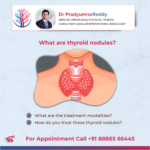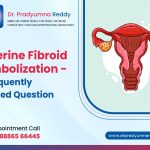Varicose veins are one of the common problems these days. They are twisted and enlarged veins that occur due to the pooling of blood in the veins. Different treatment options are available for curing varicose veins. If the varicose veins are very small, you do not need any treatment. But if they are big in size, then you need treatment as it causes pain, swelling, etc.
Endovenous laser ablation and radiofrequency ablation are the common surgical procedures used for curing varicose veins. Though both procedures are effective at treating varicose veins, you should know the difference between them so that you choose the right one.
How Does Endovenous Ablation Treatment Work?
The endovenous ablation procedure is performed by an interventional radiologist who is an expert at treating diseases using ultrasound and X-ray. The ablation method closes the vein by using radiofrequency or laser energy.
Whether radiofrequency or laser energy is used, the procedure involves inserting a thin and long tube into the affected vein through the skin. Once the catheter is in the correct place of the affected vein, a laser or radiofrequency energy tip is kept in the vein. This heats up the affected vein, scars it, and it eventually shrinks. The infected vein will be absorbed by the body and the blood flow will be redirected to another healthy vein.
Using radiofrequency or laser beams for endovenous ablation offers effective results with less downtime.
Difference Between Endovenous Laser Ablation (EVLA) and Radiofrequency Ablation (RFA)
EVLA uses laser filament where the frequency ranges from 810 to 1470 nanometers. The laser filament causes the blood vessel to clot, instead of shrinking it. The clotted blood vessel further blocks the blood flow. Earlier EVLA would cause more pain than RFA. However, using the latest tools and technology, now this procedure causes less pain.
Radiofrequency Ablation (RFA) method makes use of radiofrequency which is inserted into the vein through a small catheter. When the radiofrequency is passed on the wall of the vein, the infected vein shrinks around the catheter and finally closes the vein. The RFA process is based on the direct contact between the catheter and the vein. Once the treatment is completed, the vein will become small and will not have a blood pool in it. As time passes, the vein gets absorbed by the body and finally disappears.
Both the procedures are minimally invasive and cause little pain and bruising. Both methods are proven to be effective at treating varicose veins.
Benefits Offered by ELVA and RFA
ELVA and RFA provide the following benefits:
- It is less invasive
- The procedures can be completed within 30 to 40 minutes
- Veins get closed for about 91% to 100% within a year
- Causes less pain than other surgical procedures
- Faster recovery time
Who Cannot Have Endovenous Ablation?
Endovenous ablation, whether RFA or ELVA is not suitable for you if you:
- Are pregnant
- Have a history of blood clots
- Have a skin infection in the vein
- Have restricted mobility
Confused About Treatment Options for Varicose Veins? Dr Pradyumna Reddy Can Help You
If you or your loved one is suffering from varicose veins for a long time, Dr Pradyumna Reddy can help you. He has over 6 years of experience in performing radiofrequency procedures in Hyderabad. He is a trained interventional radiologist and became proficient at treating varicose veins. He is an expert in performing both endovenous laser ablation and radiofrequency ablation. Call us today to discuss your treatment options.






